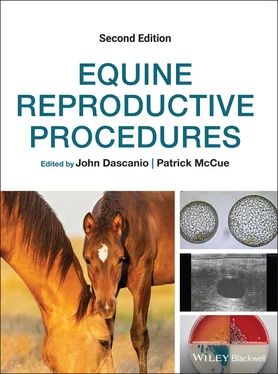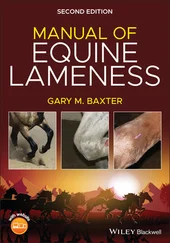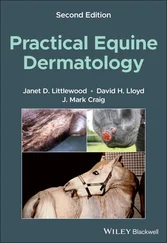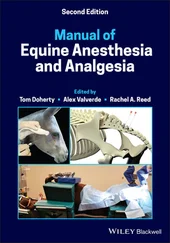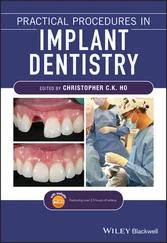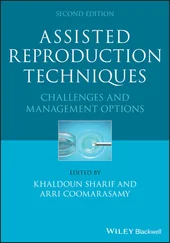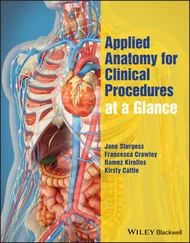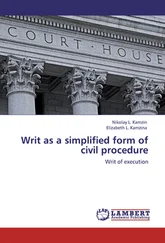3 Chapter 4 Figure 4.1 The running end of the rope (short end) is laid across the tail h... Figure 4.2 The tail hairs are flipped upward and over the rope. Figure 4.3 The running end of the rope is passed under the tail and over the... Figure 4.4 A bight (loop) from the running end of the rope is tucked under t... Figure 4.5 The standing part of the rope (longer end) is pulled to tighten t... Figure 4.6 The standing part of the rope is passed over the mare’ back to he... Figure 4.7 The mare’s wrapped tail is encompassed by a stretchy cord such as... Figure 4.8 The bungee cord is hooked to a loop of twine attached to the stoc...
4 Chapter 5 Figure 5.1 Normal conformation with two thirds of the vulvar opening lying b... Figure 5.2 Mare with a purulent vaginal discharge and dried discharge on the... Figure 5.3 Normal chalky white discharge on the ventral labia from urination... Figure 5.4 Mare with a positive Windsucker test. The arrow points at the ope...
5 Chapter 6 Figure 6.1 A thick hymen grasped with sponge forceps. A small hole was creat... Figure 6.2 The incision is enlarged with Metzenbaum scissors and a circular ...
6 Chapter 7 Figure 7.1 Palpation of the ovary (white arrow) as it is trapped against the... Figure 7.2 Manual palpation of a large follicle (arrow) within an ovary. Figure 7.3 Corpus hemorrhagicum (arrow) within an ovary. Reproduced with per... Figure 7.4 Corpus luteum (arrow) within an ovary. Figure 7.5 Parovarian cyst (arrow) adjacent to an ovary. Figure 7.6 Palpation of the uterine horn using a cupped‐hand technique. Note...
7 Chapter 8 Figure 8.1 Technique for ultrasound examination of the mare reproductive tra... Figure 8.2 Ovarian follicles. The larger follicle is developing a thickened ... Figure 8.3 Corpus hemorrhagicum (arrow). The interior of the former follicul... Figure 8.4 Mature corpus luteum (arrow) consisting of a solid structure of u... Figure 8.5 Regressing corpus luteum (arrow). Figure 8.6 Hemorrhagic anovulatory follicle. The distinguishing feature was ... Figure 8.7 Echogenic strands within a follicular lumen early in the progress... Figure 8.8 A pair of luteinized anovulatory follicles. Figure 8.9 Parovarian cyst. The cystic structure (arrow) is adjacent to the ... Figure 8.10 Granulosa cell tumor consisting of multiple cysts within an enla... Figure 8.11 Normal ovary contralateral to the ovary with a granulosa cell tu... Figure 8.12 Echogenic fluid within the uterine lumen (arrow).
8 Chapter 9 Figure 9.1 Pattern of endometrial edema relative to ovulation.
9 Chapter 10 Figure 10.1 Use of a glass vaginal speculum. Figure 10.2 Inserting a tri‐valve Polansky (Caslick) speculum. Figure 10.3 Turning the wing nut to open the tri‐valve Polansky (Caslick) sp... Figure 10.4 Discharge through the external os of the cervix in a mare with a... Figure 10.5 Urine in the cranial vaginal vault. Figure 10.6 Adhesions covering the cervix of a mare secondary to a dystocia....
10 Chapter 12 Figure 12.1 Kalayjian swab in the open position. Figure 12.2 McCullough swab in the open position. Figure 12.3 Uterine brush in the open position. Figure 12.4 Tip of a uterine culture instrument broken off in the uterine lu... Figure 12.5 Transport device for uterine cultures.
11 Chapter 13 Figure 13.1 Pattern of bacterial streaking on a Mueller Hinton II agar plate... Figure 13.2 Antimicrobial susceptibility test. This bacterial organism was s...
12 Chapter 14 Figure 14.1 Inoculation of a streak plate for cultivation of microbial organ... Figure 14.2 Culture of Streptococcus equi subspecies zooepidemicus on a quad... Figure 14.3 Culture of Escherichia coli on a quad plate with TSA with 5% she... Figure 14.4 Culture of Pseudomonas aeruginosa on a quad plate with TSA with ... Figure 14.5 Culture of Klebsiella pneumoniae on a quad plate with TSA with 5...
13 Chapter 15 Figure 15.1 Gram‐positive cocci in chains ( Streptococcus equi subspecies zoo ... Figure 15.2 Gram‐negative rods ( Escherichia coli).
14 Chapter 16 Figure 16.1 Example of an amplification curve detecting fungal DNA in a clin...
15 Chapter 17 Figure 17.1 Ciliated tall columnar epithelial cells normally found in non‐in... Figure 17.2 A raft of normal endometrial epithelial cells in an equine uteri... Figure 17.3 Inflammatory uterine cytology with quiescent macrophage (large a... Figure 17.4 A lymphocyte (arrow) in a uterine cytology sample. Figure 17.5 A pair of macrophages (solid arrows) in a uterine cytology sampl... Figure 17.6 An eosinophil (arrow) in a uterine cytology sample along with ne... Figure 17.7 Chains of cocci (arrow) in a uterine cytology sample collected f... Figure 17.8 Gram‐negative rods (arrow) in a uterine cytology sample collecte... Figure 17.9 Yeast organisms (Candida albicans) (arrow) in a uterine cytology... Figure 17.10 Aspergillus fumigatus organisms in a mare with fungal endometri... Figure 17.11 Yeast (large arrow) and hyphae (small arrow) with neutrophils i...
16 Chapter 18 Figure 18.1 Low volume lavage supplies, including a uterine catheter, single... Figure 18.2 Infusion of sterile saline into the uterus by gravity flow for l... Figure 18.3 Recovery of fluid from the uterus during a low volume lavage pro...
17 Chapter 19 Figure 19.1 Endometrial biopsy instrument passed into the uterus of the mare... Figure 19.2 Endometrial biopsy from a mare with endometritis. Note the lymph... Figure 19.3 Endometrial biopsy (grade III) from a mare with severe fibrosis.... Figure 19.4 Biofilm (bracket) adhered to the endometrial surface of a mare w...
18 Chapter 20 Figure 20.1 Intrauterine adhesions in a mare viewed through an endoscope. Figure 20.2 Endometrial cups viewed through an endoscope in a mare that lost... Figure 20.3 Normal mare’s cervix viewed by endoscopy. Figure 20.4 Hysteroscopic view of a normal mare’s uterine bifurcation. Figure 20.5 Hysteroscopic view of a normal mare’s uterine horn. Figure 20.6 Hysteroscopic view of a normal mare’s utero‐tubal papilla (arrow... Figure 20.7 Marble within the uterine lumen viewed by an endoscope. Figure 20.8 Tip of a uterine culture instrument in the uterine lumen viewed ...
19 Chapter 21 Figure 21.1 Two ultrasound images of endometrial cysts of 2.5 and 2.6 cm dia... Figure 21.2 Lymphatic cysts removed using a snare. The snare is to the right... Figure 21.3 Uterine cyst viewed through a videoendoscope.
20 Chapter 22 Figure 22.1 A semiconfluent horse fibroblast cell culture showing many divid... Figure 22.2 A G‐banded metaphase spread of a normal male horse; magnificatio... Figure 22.3 G‐banded chromosomes of a normal male horse arranged into a kary... Figure 22.4 A C‐banded metaphase spread of a male horse; distinct C‐bands of... Figure 22.5 Fluorescence in situ hybridization (FISH) (a) with horse X chrom...
21 Chapter 24 Figure 24.1 Sites for insertion of trocars (arrows) in the paralumbar fossa ... Figure 24.2 Collection of an ovarian biopsy. Figure 24.3 Removal of an ovarian biopsy sample.
22 Chapter 25 Figure 25.1 Mammary gland of a mare. Note the two teat orifices visible on t... Figure 25.2 Enlargement of the right rear quarter of a mare secondary to mas... Figure 25.3 Edema cranial to the udder in a mare with mastitis. Figure 25.4 Enlargement of the entire udder in a mare with galactorrhea seco... Figure 25.5 Thick inflammatory fluid expressed from the udder of a mare with... Figure 25.6 Cytologic evaluation of mammary fluid from a mare with mastitis....
23 Chapter 29 Figure 29.1 Landmarks for instrument portals: 1 is the laparoscopic portal; ...
24 Chapter 30 Figure 30.1 Application of PGE 2gel (small arrow) onto surface of the oviduc...
25 Chapter 32 Figure 32.1 Hysteroscopic view of hydrotubation of the uterine tubes. The gu... Figure 32.2 Hysteroscopic view of the hydrotubation procedure with the cathe...
Читать дальше
